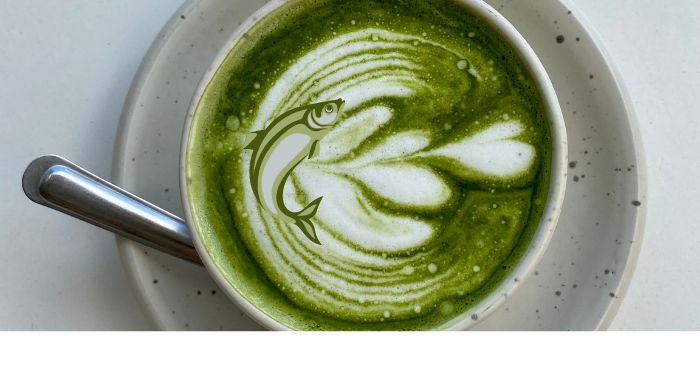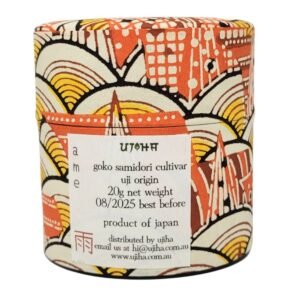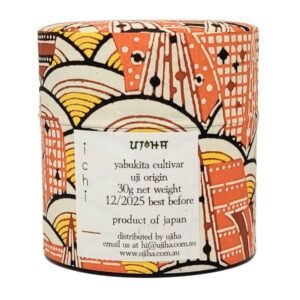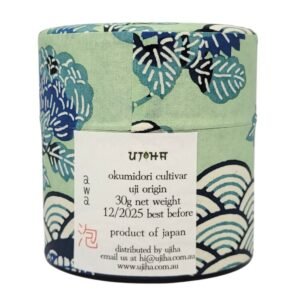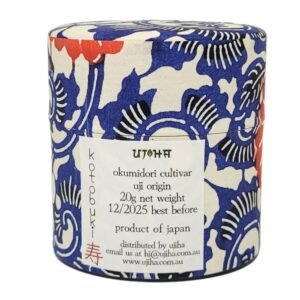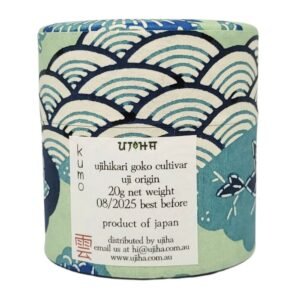Ah, matcha! The vibrant green powder that’s become a staple in trendy cafes and health-conscious kitchens worldwide. This finely ground green tea is cherished for its unique flavor, impressive health benefits, and the serene rituals that accompany its preparation.
But if you’ve ever taken a sip and thought, “Why does matcha taste like fish?” you’re not alone. This question has puzzled many matcha newcomers and even some seasoned drinkers.
Understanding why matcha sometimes carries this unexpected flavor is crucial for a few reasons. Firstly, it helps you appreciate the complex flavor profile of matcha, which can range from sweet and vegetal to umami-rich and slightly bitter.
Secondly, it guides you in selecting, storing, and preparing matcha to ensure a delicious and harmonious experience every time. So, let’s dig into the reasons behind this fishy note and how to enjoy your matcha at its best.
The Science Behind Matcha’s Flavor
Amino Acids – The Umami Culprit
- L-Theanine: This magical amino acid is a star player in matcha’s flavor profile. L-Theanine is known for its calming effects, which is why a cup of matcha can make you feel so zen. But it’s also a major contributor to matcha’s umami flavor, the savory, rich taste that sets it apart from other teas. However, in high concentrations, L-Theanine can sometimes edge towards a fishy taste, especially if the balance of flavors is off.
- Glutamic Acid: Another umami heavyweight in matcha is Glutamic Acid. This compound is responsible for that deep, savory flavor that makes your taste buds do a happy dance. It’s the same stuff that gives Parmesan cheese and soy sauce their addictive qualities. But beware, if there’s too much Glutamic Acid, or if it’s not balanced well, it can push the flavor into fishy territory.
Quality of the Matcha
- Difference Between Ceremonial and Culinary Grade Matcha: Not all matcha is created equal. Ceremonial grade matcha is the premium stuff, made from the youngest, most tender leaves, intended to be enjoyed in its purest form. It boasts a smooth, balanced flavor profile that’s perfect for traditional tea ceremonies. Culinary grade matcha, on the other hand, is made from older leaves and has a stronger, more robust flavor. It’s great for cooking and baking, where its intense taste can stand up to other ingredients.
- Impact of Quality on Flavor Balance and Fishy Notes: High-quality ceremonial matcha tends to have a more harmonious blend of flavors, with a gentle umami that avoids the fishy edge. Lower-quality matcha, particularly some culinary grades, can sometimes have a harsher, more pronounced umami flavor that tips over into fishiness. This is often due to differences in cultivation, processing, and the age of the leaves used. But rarely have I had a culinary grade matcha that tasted like fish. The following could be the real culprit.
Processing and Storage
- Effects of Oxidation on Matcha Flavor: Oxidation is the enemy of fresh matcha. When matcha is exposed to air, its delicate compounds start to break down. This not only dulls the vibrant green color but also alters the flavor, making it more bitter and sometimes bringing out those unwanted fishy notes. It’s like leaving an apple slice out, it browns and loses its fresh taste.
- Importance of Proper Packaging to Maintain Freshness and Flavor: To keep matcha tasting its best, proper storage is key. Matcha should be stored in airtight, opaque containers to protect it from light, air, and moisture, all of which can degrade its quality. High-quality matcha often comes in specially designed tins or resealable bags that help preserve its freshness. By keeping your matcha well-sealed and stored in a cool, dark place, you can ensure that every cup is as delicious and fresh as the first.
How to Avoid the Fishy Taste
Choose High-Quality Matcha
- Importance of Selecting Ceremonial Grade Matcha from Reputable Brands: To dodge that fishy taste, always go for the top-tier stuff, ceremonial grade matcha. This grade is made from the youngest, finest tea leaves and crafted with care to ensure a smooth, balanced flavor. By choosing high-quality matcha, you’re setting yourself up for a delightful experience that’s free from any unwanted fishiness.
Proper Storage
- Ideal Storage Conditions: Cool, Dark, and Dry: Matcha is a bit of a diva when it comes to storage. It loves cool, dark, and dry places. Heat and light can ruin its delicate flavor profile, and humidity is its worst enemy. Think of your matcha like a vampire, it thrives in the dark and hates sunlight.
- Use of Airtight and Opaque Containers to Preserve Flavor: To keep your matcha fresh and fabulous, store it in an airtight, opaque container. This keeps out air, light, and moisture, which can all degrade the quality. Those fancy tins or resealable bags that high-quality matcha comes in? Use them! They’re designed to keep your matcha at its best. We do recommend buying an airtight, opaque tea caddy.
Preparation Tips
- Sifting Matcha for a Smoother Taste: Sifting your matcha before whisking breaks up any clumps and ensures a smooth, even mixture, enhancing the overall flavor and texture. It’s a small step that makes a big difference.
- Using the Correct Water Temperature: Water that’s too hot can scald the matcha, bringing out bitter and fishy notes. Aim for a water temperature of around 70-80°C (160-175°F). This helps preserve the delicate flavors and ensures a pleasant drinking experience.
- Proper Whisking Technique to Balance Flavors: Whisk your matcha with a bamboo whisk (chasen) in a zigzag motion until you achieve a frothy layer on top. This not only blends the matcha well but also aerates it, balancing the flavors beautifully. A well-whisked matcha is smoother and more enjoyable, free from any fishy undertones.
Exploring the Umami Spectrum
Understanding Umami
- Embracing Umami as Part of the Matcha Experience: Umami is the savory, rich taste that’s a hallmark of high-quality matcha. It’s what gives matcha its depth and complexity, making each sip a unique experience. Embracing the umami flavor is key to fully appreciating what matcha has to offer. It’s like the bass line in your favorite song, subtle, but it makes all the difference.
- Fishy Taste as One End of the Umami Spectrum in Matcha: Sometimes, the umami flavor can tip into fishy territory. This is often a sign of over-concentration of certain amino acids, like L-Theanine and Glutamic Acid. Understanding that this fishy note is just one extreme of the umami spectrum helps you appreciate the balance needed in high-quality matcha to keep flavors harmonious and pleasant.
Culinary Matches
- Pairing Matcha with Complementary Flavors: To balance the umami in matcha, pair it with complementary flavors that enhance its natural profile. Sweet treats like mochi, dorayaki, or wagashi can provide a delightful contrast, making the umami notes more approachable. Even a simple piece of dark chocolate can work wonders in balancing matcha’s rich taste.
- Using Sweeteners to Balance Strong Umami Notes: A touch of sweetness can go a long way in mellowing out strong umami or fishy notes. Adding a bit of honey, agave, or even a light syrup can help round out the flavors, making your matcha more enjoyable. Just a small amount can transform your cup, highlighting the best of matcha’s flavors while keeping any overpowering notes in check.
By exploring and understanding the umami spectrum in matcha, you can better appreciate its unique flavor profile and make the most of your matcha drinking experience. Pairing it with the right foods and adjusting the sweetness can enhance your enjoyment, ensuring every cup is a delightful journey through the rich world of matcha.
Conclusion
The fishy taste in matcha can be quite the head-scratcher, but now you’re equipped with the knowledge to tackle it. This unexpected flavor is primarily due to the presence of amino acids like L-Theanine and Glutamic Acid, the quality of the matcha, and how it’s processed and stored.
To minimize those unwanted fishy notes and elevate your matcha experience:
- Choose High-Quality Matcha: Opt for ceremonial grade matcha from reputable brands. This ensures a smoother, more balanced flavor.
- Store Properly: Keep your matcha in a cool, dark, and dry place, using airtight and opaque containers to maintain its freshness and flavor.
- Prepare with Care: Sift your matcha, use water at the right temperature (70-80°C or 160-175°F), and whisk it well to balance the flavors.
Finally, embrace the complexity of matcha’s flavor profile. The rich umami, the delicate sweetness, and even the subtle bitterness all play a part in creating the unique taste that makes matcha so special. Appreciate the journey your taste buds take with each sip, and enjoy the intricate dance of flavors that only high-quality matcha can offer. Cheers to a delightful and fish-free matcha experience!
Matcha That DOES NOT Taste Like Fish
-
Ujiha Ame Supreme Ceremonial Grade Matcha 2024 First Harvest
Price range: $39.99 through $54.99 -
Premium Ceremonial Grade Matcha Ichi 40g First Harvest 2025
Price range: $39.99 through $54.99 -
Ujiha Awa Premium Organic Ceremonial Grade Matcha 2024 First Harvest
Price range: $44.99 through $59.99 -
Ujiha Kotobuki Supreme Organic Ceremonial Grade Matcha
Price range: $39.99 through $54.99 -
Ujiha Kumo Super Supreme Ceremonial Grade Matcha First Harvest 2024
Price range: $49.99 through $64.99

